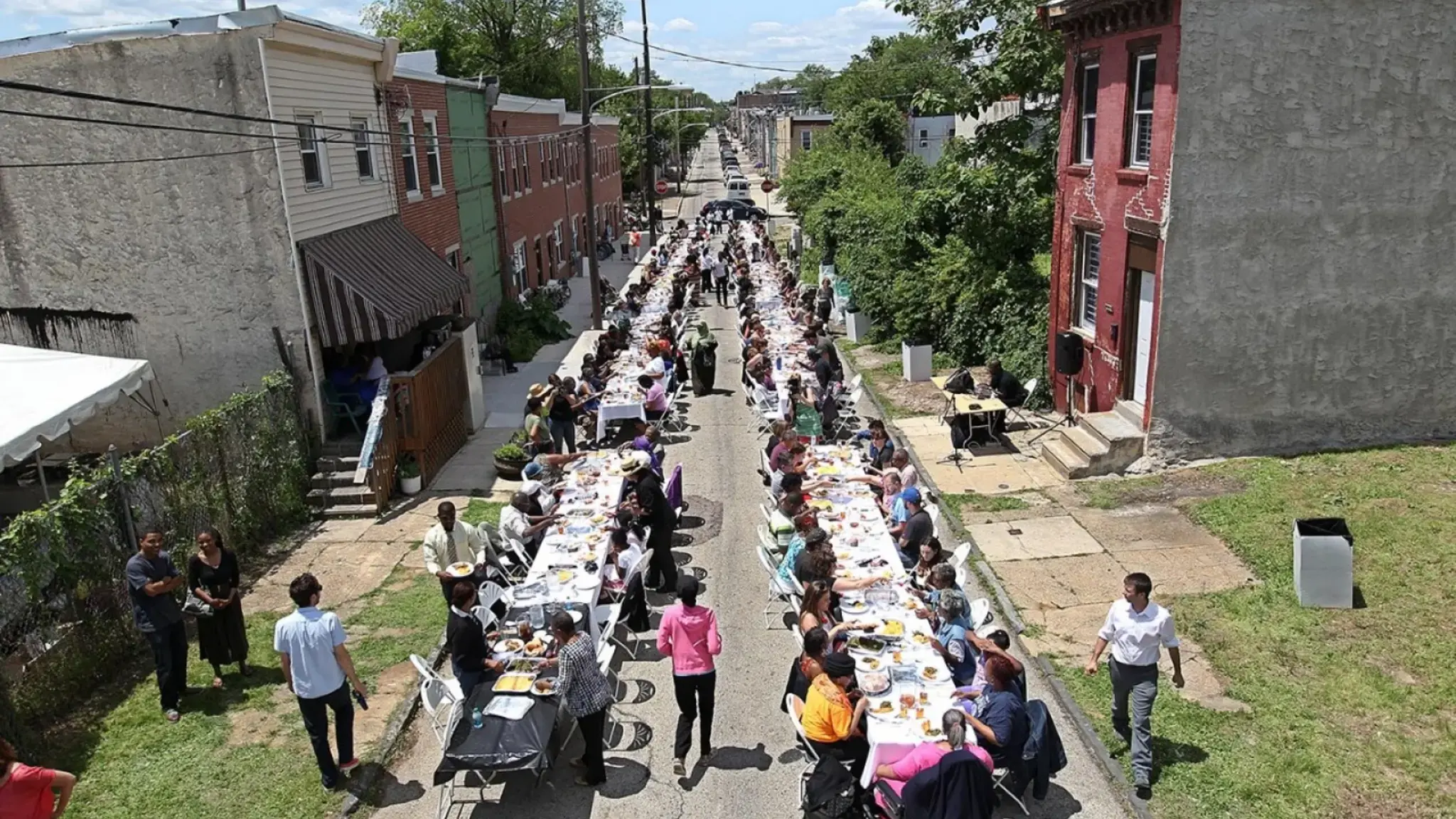

On Saturday, May 31, a house at 3711 Melon Street in the Mantua neighborhood of West Philadelphia will be demolished. To mourn the loss of yet another row house in the area, a group of participating artists and community leaders will stage a proper funeral for the home, replete with a eulogy, reminiscences, and a procession. We sat down with Robert Blackson, director of Temple Contemporary and one of the project’s principal organizers, for some details.
Why is this particular house being torn down?
The question is a biggie and I’m afraid I have as few answers for this question as I do for the reasons our loved ones pass on. It could be because the mortar cementing the face of the house to the parting walls has not been strong enough to withstand the decades of harsh Philadelphia winters causing cracks up and down the corners of the home, so wide you can stick your fingers in. Or it could be that due to all the economic housing stimulus preservation packages rolled out across this city in areas like Parkside or Old City that Mantua—up until now—has often been left out of the equation. The answers are this big and that small.
A few years ago the Licenses and Inspections Department (L&I) nearly pulled down 3711 Melon Street because the bricks bulging from the home’s second story were about to fall onto the sidewalk below. Roger Richardson, who lived in the house until his late forties and had since moved around the corner, rushed over to the L&I demolition crew and begged them to stop. They did. He replaced the bricks with cinder blocks and patched it all up with a thick smear of stucco. Roger, the only child of the last African-American family to own 3711 Melon, died in 2009. 3711 has had no family since. As Miss Audrey Davis, who has lived across the street since 1948, told me last week, “When the breath leaves a home, the house falls soon after.”
What kind of research have you been doing while preparing for the funeral?
Some of the most interesting and resonating ideas I have come across in my research of this project have stemmed from poets—most particularly Thomas Lynch, whose book The Undertaking has been deeply influential. Lynch (who is also a funeral director) made a comment in his book that “mourning is romance in reverse” and I feel that this is true of Funeral for a Home.
How did you decide on this particular home?
Temple Contemporary’s programming is guided by an advisory council of over 35 members (including high school students from Temple’s north Philadelphia neighborhood, farmers, civic leaders, Temple students, etc.). It’s a wonderful, wide-ranging group that insures our efforts are not unilaterally determined, but responding to a communal effort embodying the breadth of contemporary life in Philadelphia. Accordingly, the decision for the funeral to land in Mantua resulted from months of conversations and consultation with property owners, community leaders, historians, artists, and, of course, my colleagues at Temple. There are literally hundreds if not thousands of houses across this city, ripe for demolition. With so many to choose from it came down to practicalities: what style of house (two stories or three?) we could afford to bury (Jessica Mitford’s infamous economic conclusions hold true even for houses), as well as the character of the neighborhood in which that home belongs. We unanimously agreed that Mantua’s motto, “Plan or Be Planned For” aligned with Funeral for a Home’s sense of personal and civic responsibility.
What will happen to the site once the house has been torn down and its body removed?
This effort has been a labor of love for Mantua residents as well as Billy and Steven Dufala, Patrick Grossi (project manager), and Sarah Biemiller (Temple Contemporary’s assistant director). I often think of Philadelphia’s acres of vacant land like filled cemetery plots. And it was important to all of us that the plot, like those of our passed loved ones, is well-kept and maintained. To their credit, the Pennsylvania Horticultural Society has enthusiastically agreed to maintain 3711’s plot. They will ensure that the land is “cleaned and greened” until the West Philadelphia Real Estate company is able to build new, low-income housing for Mantua residents (not college students) on this plot and its neighboring vacant plots.
Funeral for a Home is a collaborative project spearheaded, in part, by Robert Blackson, the artists Billy and Steven Dufala, Patrick Grossi, and Sarah Biemiller through Temple Contemporary at the Tyler School of Art. For more information, click here.